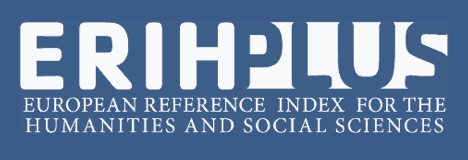Methodologies for physical geography teacthing
Abstract
One of the main difficulties encountered by students from elementary school (1st to 9th grader) and high school (1st to 3rd grade) in educational institutions in Brazil is the assimilation of Physical Geography's content presented in the Geography's textbooks. Among the methodologies to be presented, the first is the Realias that consist of present set of objects representing a content, providing the association between this object with the subject to study, another methodology and teaching resource is the Terrarium, which consists of full reproduction of a ecosystems in miniaturewithin objects. And as a third alternative, which involves the relationship between theory and praxis is to use the "field work" due to their importance to the visualization of environmental dynamics in situ. Another method is the "Environmental Studies", which allows the student to relate the contents studied with the phenomena related to the daily life. As a fifth alternative will present the methodology of Mental Maps, which are representations through drawings, the perception of the places lived by the interviewees. In order to provide a set of methodological tools to assist teachers and students in teaching and learning of physical geography content.
References
BISPO, M. A concepção de natureza na Geografia e a relação com a Educação Ambiental. Revista TERCEIRO INCLUÍDO NUPEAT–IESA–UFG, v.2, n.1, jan./jun./2012, p.41–55, Artigo 19. Disponível em: https://www.revistas.ufg.br/teri/article/viewFile/19956/11534.
CAVALCANTI, L. S. Geografia e práticas de ensino. Goiânia: Editora Alternativa, 2002. v. 1. 127p.
COMPIANI, M. Ensaios de interdisciplinaridade no ensino fundamental com geologia/geociências. In: PONTUSCHKA, N.; OLIVEIRA, A. (org.). Geografia em Perspectiva. 1 ed.São Paulo: Editora Contexto, 2002, v. , p. 125-133.
COMPIANI, M. O lugar e as escalas e suas dimensões horizontal e vertical nos trabalhos práticos: implicações para o ensino de ciências e educação ambiental. Ciência e Educação (UNESP), v. 13, p. 29-45, 2007.
DEMO, P. Pesquisa Participante. Saber pensar e intervir juntos. Brasília: Liber Livro, 2004. v. 1. 139p.
LATUF, M. O. Geografia Física ou Humana, ou será apenas Geografia?. Formação (Presidente Prudente), v. 1, p. 205-206, 2007.
LEPSCH, I. F. (org.). Formação e Conservação dos Solos. 2. ed. São Paulo: Oficina de Textos, 2010. v. 1. 216p.
LOUZADA, C. As grandes obras para a reabertura da BR-319 e os impactos nas localidades ribeirinhas Bela Vista e Manaquiri no Rio Solimões/Amazonas. 2014. 221f. Dissertação (Mestrado em Geografia) - Programa de Pós-graduação em Geografia na Universidade Federal do Amazonas-UFAM. Manaus, 2014.
MENDONÇA, F. Geografia Socioambiental. Terra Livre. São Paulo: nº 16, p. 139 - 158, 2002
MORAES, A.C.R. Geografia: pequena história crítica. 19ª. ed. São Paulo: Annablume, 2003. v. 1. 132p
MORIN, E. Complexidade Restrita, Complexidade Geral. In: Morin, E e MOIGNE, J-L (Org.) Inteligência da Complexidade: Epistemologia e pragmática. 2º Ed. Instituto Piaget, 2007.
NOGUEIRA, A.R.B. Uma interpretação fenomenológica na Geografia. In: Silva, Aldo; Galeno, Alex. (Org.). Geografia Ciência do Complexus. 1ªed., Porto Alegre: Sulina, 2004, p. 209-236.
NOGUEIRA, A.R.B. Mapa Mental: Recurso didático para o estudo do Lugar. In: PONTUSCHKA, N.; OLIVEIRA, A. (org.). Geografia em Perspectiva. 1 ed.São Paulo: Editora Contexto, 2002, v. , p. 125-133.
PACHECO, Jesuéte B. et al. Terrário: uma metodologia que interdisciplina a geografia com outros componentes curriculares na educação básica. Ibero Américo de Extensão Universitaria. Santa Fé – Argentina, 2011. Disponível em: http://www.unl.edu.ar/iberoextension/dvd/archivos/ponencias/mesa2/terrario-uma-metodologia-que.pdf
PONTUSCHKA, N. N. ; PAGANELLI, T. I. ; CACETE, N. H. Para ensinar e aprender Geografia - 3ª. ed. São Paulo: Cortez, 2009. v. 1000. 383p .
SILVA, A.C. Materiais especiais: conceitos, tratamentos e a formação de uma hemeroteca. (Monografia)Natal: UFRN, 2002.
SILVA, M.A. FONSECA, S.G. Ensino de História hoje: errâncias, conquistas e perdas. Revista Brasileira de História (Impresso), v. 30, p. 13-33, 2010.
SUERTEGARAY, D. M. A. Pesquisa de campo em Geografia. GEOgraphia (UFF), Niterói/RJ, v. 7, p. 92-99, 2002.
VEGA, A.G. de la. Un Enfoque Innovador En La Didáctica Del Paisaje: Escenario Y Secuencia Geográfica. In: GONZÁLEZ, R.M. TORRES, M.L.de.L. e. GAITE, M.J.M. (Org.) Innovación en la enseñanza de la geografía ante los desafíos sociales y territoriales 1o ed. Zaragoza: Institución Fernando el Católico, 2007.
Keywords
Policy Proposal for Free Access Journals
Authors who publish in this journal agree to the following terms:
a. Authors retain the copyright and grant the journal the right of first publication, with the work simultaneously licensed under the Creative Commons Attribution License which allows the sharing of the work with acknowledgment of the authorship of the work and initial publication in this journal.
b. Authors are authorized to take additional contracts separately, for non-exclusive distribution of the version of the work published in this journal (eg publish in institutional repository or as a book chapter), with acknowledgment of authorship and initial publication in this journal.
c. Authors are allowed and encouraged to publish and distribute their work online (eg in institutional repositories or on their personal page) at any point before or during the editorial process, as this can generate productive changes, as well as increase the impact and The citation of published work (See The Effect of Free Access).





















